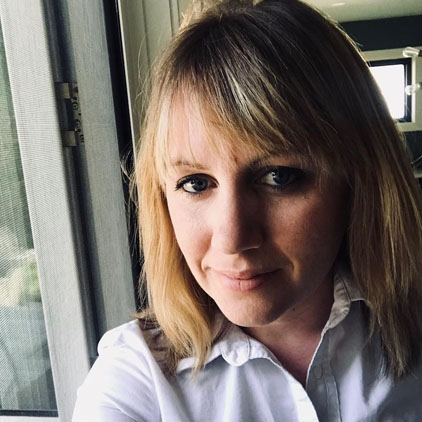Nicki

When I turned 40, I went to my GP and asked to be referred for a mammogram. Even though the recommended age for mammograms in Ontario is 50, I felt that I should have one because my aunt (on my mum’s side) had had breast cancer, and my doctor agreed. That mammogram was clear, my mind was set at ease and I never gave any thought to when I would get re-tested. However, about 18 months later I discovered a small lump on my left side close to my armpit and I knew it needed to be checked out. It turned out to be stage 1 breast cancer. It was so small – only about 1cm. Most women that detect breast cancer lumps don’t notice them until they are 3cms.
After my diagnosis, I underwent several imaging methods including ultrasound, contrast mammograms, and MRI. The ultrasound picked up a second small tumour and the MRI showed a cloudy area which turned out to be DCIS (which is a type of pre-cancer cell and known as stage 0 cancer). I ended up having a lumpectomy at first. The pathology report actually detected 3 tumours and confirmed DCIS, but luckily my lymph nodes were cancer free. Due to the DCIS, I had a mastectomy on my left side. The pathology report from that surgery revealed a 4th tumour. Granted all 4 of these tumours were small, but none of them were detected on the mammogram that I had at 40, or even subsequent mammograms that I had after the diagnosis. I was told, at the time of diagnosis that the reason my tumours were obscured, was because I had dense breasts. I kind of laughed this off, thinking to myself ‘no wonder I’ve always liked my breasts.’
What I have learned throughout this process is this: the knowledge and understanding of my breast density would not have prevented me from developing breast cancer. However, if it weren’t for my self-exam, my cancer could have gone undetected for a long time and spread to my lymph nodes and resulted in much more invasive treatment or death. But how many women do self-exams these days?
There are two lessons to learn from my story. Firstly, early detection is key. I had the same risk factors for breast cancer as anyone else. When women develop breast cancer in their 40s, it is usually estrogen-driven, like mine, which means it is more aggressive and faster growing and more likely to result in death if not treated early. Mammogram screening should start at 40.
Secondly, if I had been told that I had dense breasts, I would have made sure to get checked, both through annual mammograms and self-exams. I would have kept an eye on it. Knowledge is power and the very least we can do is report to women when they have dense breasts in categories C or D. I was category C.
I take some ownership for finding my cancer and saving my own life – however, in reality, a lot of it came down to pure luck. It was lucky that I decided to check my breasts when I did. It is lucky that I followed my instincts and had it looked at immediately. It is lucky that I am here today to talk about it and to see my children grow up.
